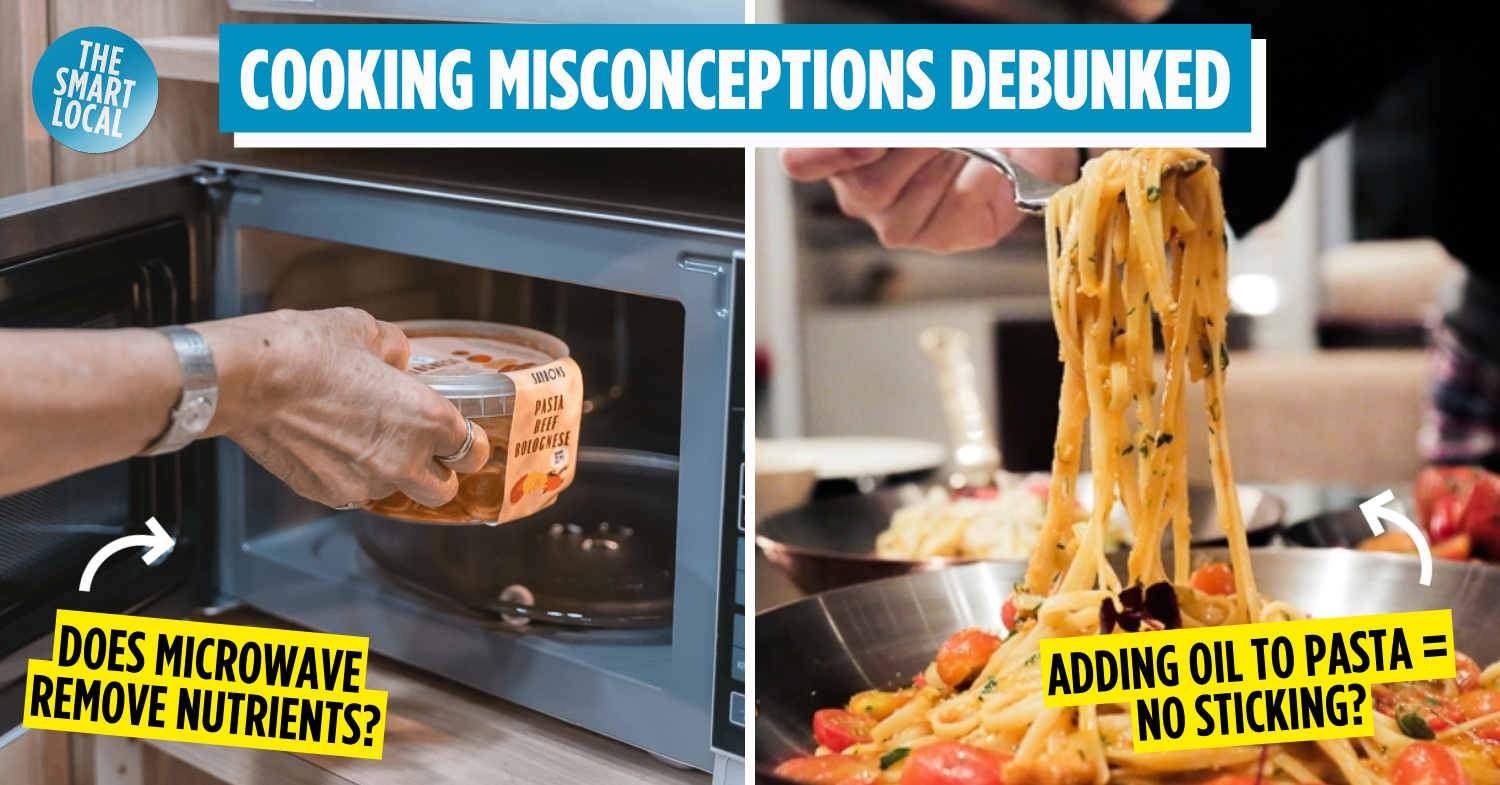Cooking misconceptions debunked
Whether you’re a master chef or a newbie learning how to cook, there are quite a number of misconceptions about cooking that have been going around – think myths like how food that is microwaved gets laced with radiation, or that alcohol evaporates into oblivion when you cook it.
Where did they come from? We can’t say for sure either, but you’ll be surprised to find out that you may have been doing some things wrong your entire life, or fearing things that aren’t grounded in science. Here are some common misconceptions about cooking to challenge your culinary knowledge.
Table of Contents
- Cooking misconceptions debunked
- 1. Milk is needed to make fluffier scrambled eggs
- 2. The seeds of a chilli or pepper are the spiciest part
- 3. Microwaving food causes it to lose nutrients
- 4. Alcohol disappears through evaporation when cooked
- 5. Frozen vegetables are not as nutritious & tasty as fresh ones
- 6. Flip your pancakes the moment you see bubbles forming
- 7. Salt makes your water boil faster
- 8. It’s best to store food in Tupperware so they stay fresh for longer
- 9. Adding oil to pasta prevents them from sticking together
1. Milk is needed to make fluffier scrambled eggs
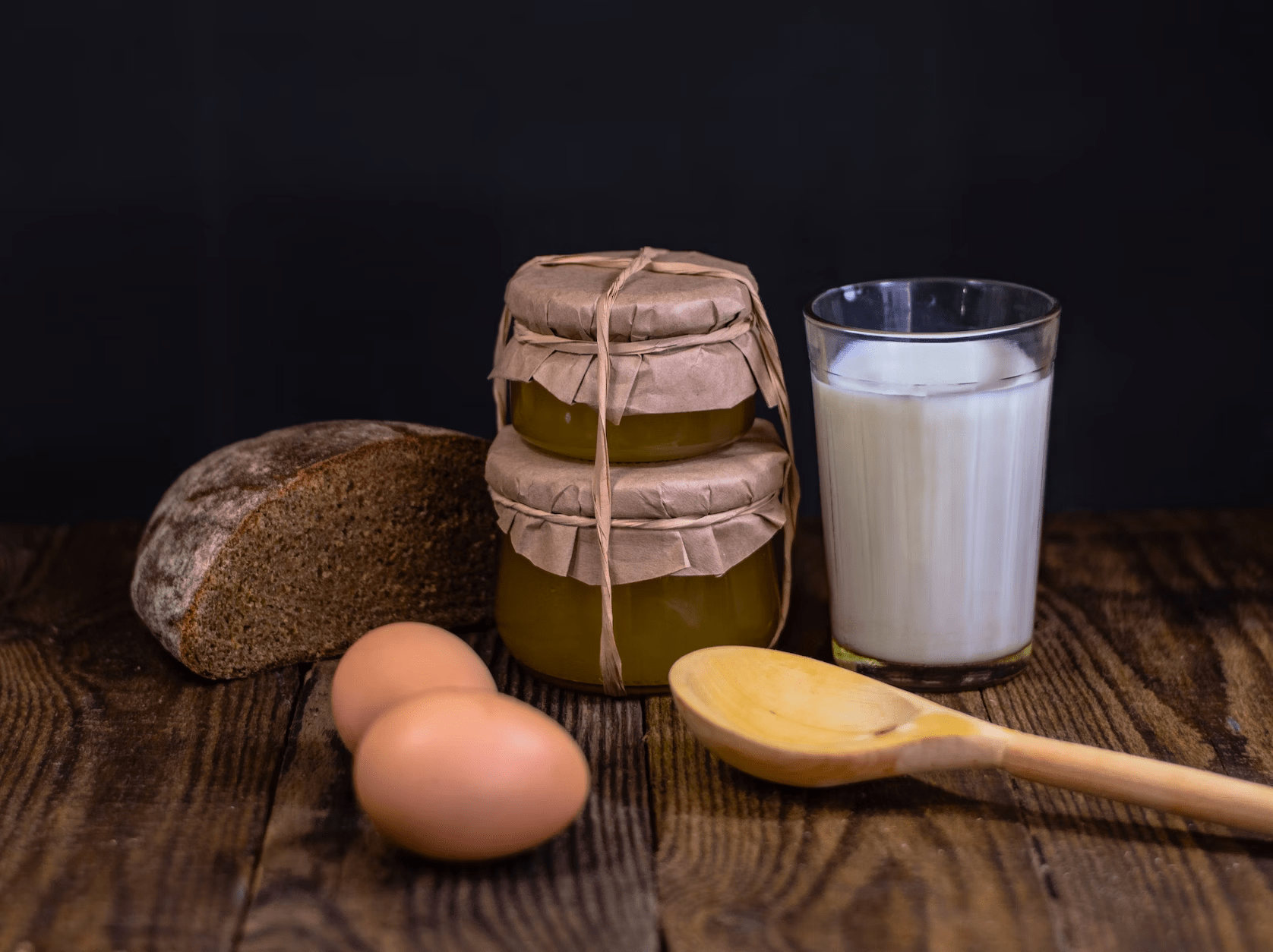 Image credit: @jankowski_dev via Unsplash
Image credit: @jankowski_dev via Unsplash
Myth: Adding milk is a must to help make your scrambled eggs fluffier.
Reality: When it comes to baking, we all know that milk is essential to help make our bakes nice and fluffy. But when it comes to cooking scrambled eggs, the milk will evaporate faster than the other liquids in your beaten egg mixture. This means that adding milk will only end up thinning your mixture rather than helping you fluff up the end product.
So, if you don’t want an overcooked, rubbery breakfast, we suggest you skip the milk and instead, beat your eggs really, really thoroughly before cooking. Incorporating more air would be a better bet if fluffy scrambled eggs are what you’re after.
2. The seeds of a chilli or pepper are the spiciest part
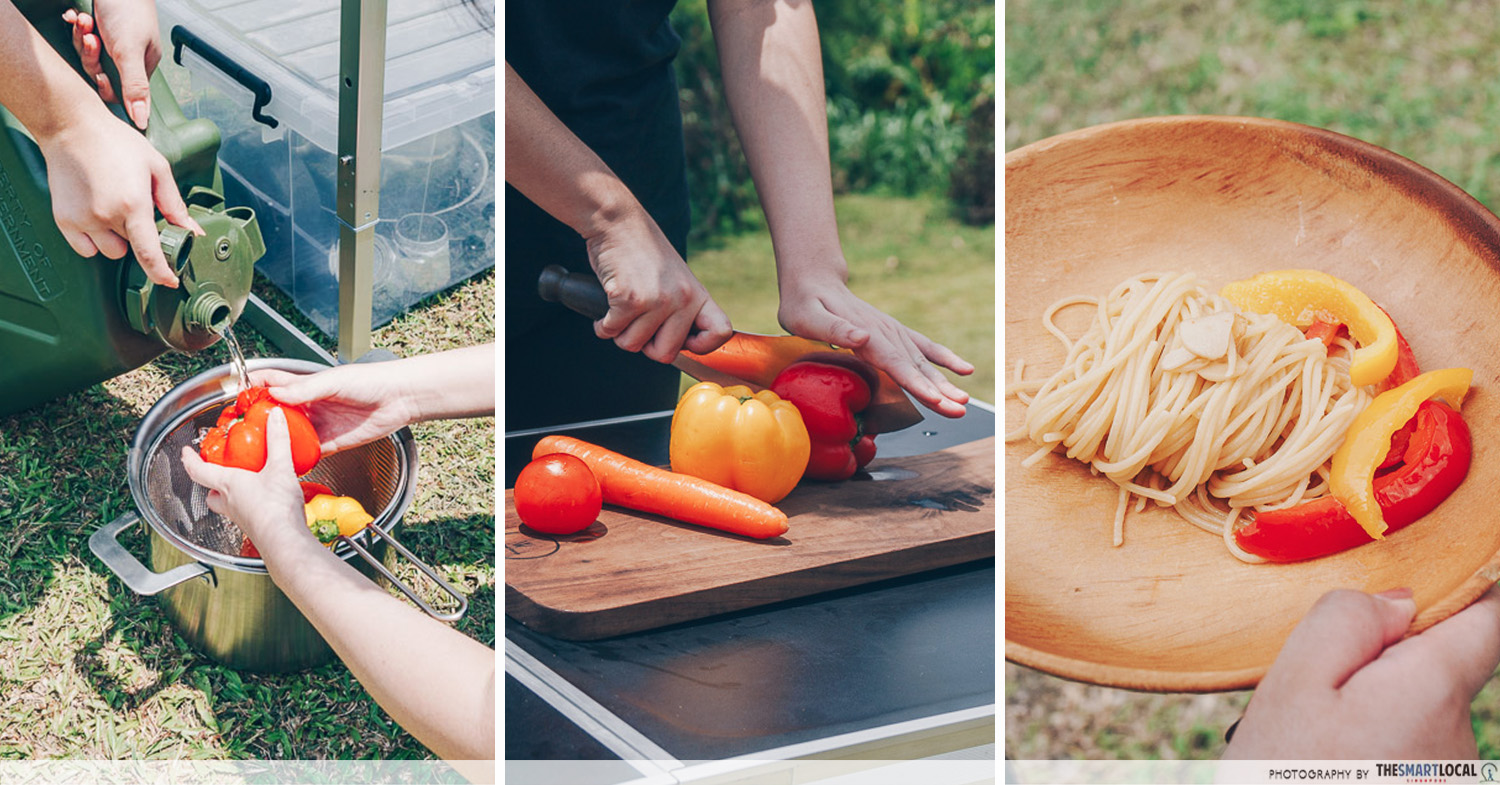
Myth: If you happen to bite into the seed of a chilli or pepper, you die liao.
Reality: Actually, seeds aren’t to blame for the flames in your mouth as they carry little to no capsaicin – the component that’s responsible for the fiery spice sensation. But, they are surrounded by a membrane that coincidentally carries the most capsaicin as well.
Hence, we often mistake the seeds for the one causing all the spice when it’s actually any remnant membrane that may have rubbed off on them.
3. Microwaving food causes it to lose nutrients
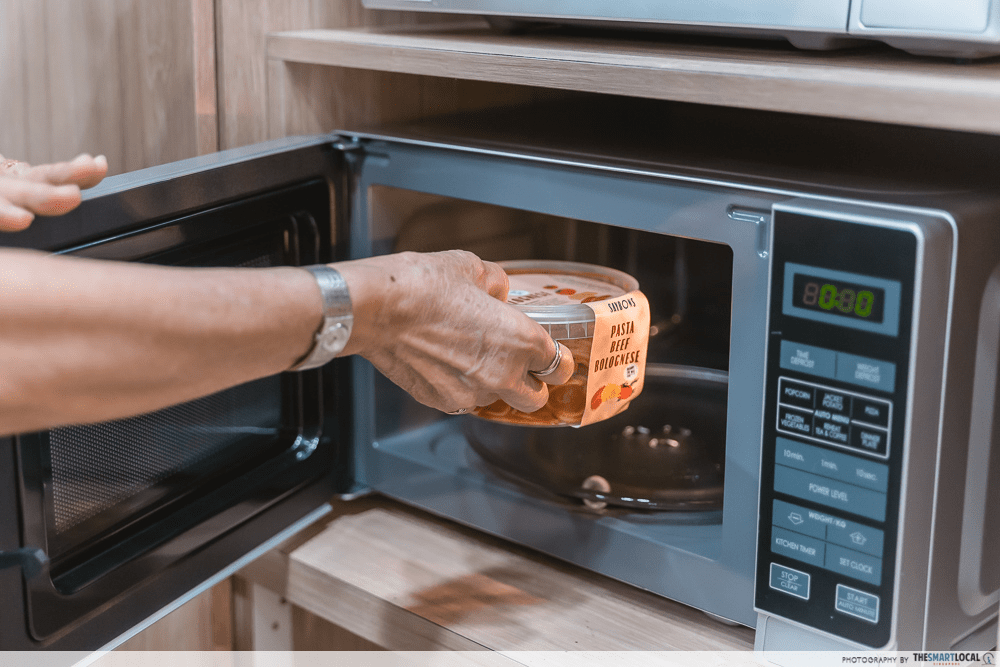
Myth: Microwaved food loses its nutrients in the heating process, and the radiation can be harmful to humans.
Reality: Many of us tend to have this idea that microwaved food isn’t very healthy. Perhaps, it’s because technology has made it so convenient to either cook a meal that may otherwise have taken hours to prepare, or to reheat leftovers to make them hot and appetising again.
However, experts believe that not only are microwaves not that bad, they could also even be the better form of food preparation in some cases. This is because microwaving food exposes it to heat for a shorter period of time as compared to conventional cooking, and this helps to reduce the loss of nutrients due to heat.
As for whether the radiation from microwaves is harmful to your food, rest assured that decades worth of research have been done on this matter. And let’s just say, if it were really that hazardous, we wouldn’t be allowed to have one in pretty much every household.
4. Alcohol disappears through evaporation when cooked

Myth: It’s okay to add alcohol to your food when cooking, as the heat will cause the alcohol content to evaporate away entirely.
Reality: A little math and science here, but a study from the U.S. Department of Agriculture Nutrient Data Laboratory found out that the amount of alcohol that’s still hanging around in your food after cooking is actually directly related to the temperature of the food when cooked, as well as the amount of time your food was cooked for.
Without whipping up exact mathematical formulas, just know that there’ll always still be a trace of alcohol in your food left behind. But not to worry, the amount remaining shouldn’t be enough to get you drunk unless you added entire bottles of alcohol in the first place. This is more for those with strict dietary restrictions or sensitivities to be wary of.
5. Frozen vegetables are not as nutritious & tasty as fresh ones

Myth: Frozen vegetables aren’t fresh from the shelves, hence they’re inferior in both the taste and nutrition department.
Reality: Fresh products have a limited shelf life, and the time taken for vegetables to be harvested, processed, transported to your local supermarket, then purchased by you and brought back to your kitchen can be quite a long while.
Vegetables tend to lose their nutritional value over time, hence freezing them is a good way of increasing their shelf life while retaining their nutritional value. Technological advancements have also made it such that the nutrient levels of fresh produce are sealed in when flash-frozen. Now you know to think twice before you look down on frozen vegetables.
6. Flip your pancakes the moment you see bubbles forming
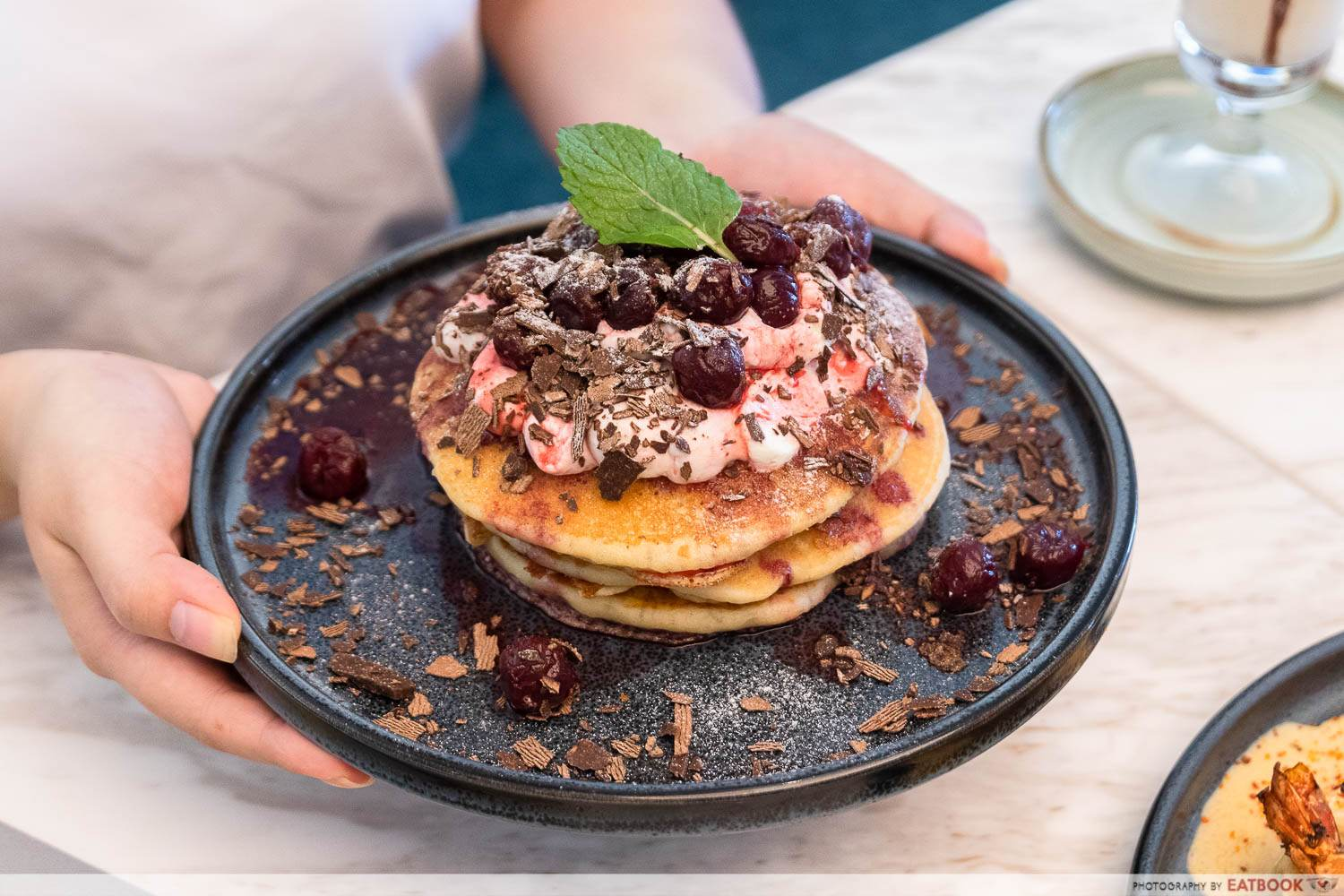
Image credit: Eatbook
Myth: To cook golden-brown pancakes, make sure you flip them once you see bubbles emerging.
Reality: A good gauge of when to flip your pancakes is when the bubbles on the surface start popping, instead of just when bubbles start to appear in the batter. However, this is heavily dependent on your pancake batter as well.
For example, if your pancake batter is made of nut or bean flours which take a shorter duration to caramelise and burn, make sure your stove is on low to medium heat and start flipping the moment the bottom end of your pancake starts to firm up. You’ll notice that the edges go from a fluid to solid state, and are easy to lift when you slide a spatula under.
Bonus: It’s not just about the batter, either. When it comes to prepping your pan, butter is rather easy to burn so unless you’re very zai, you might want to consider using vegetable oil to oil the surface before you pour your batter in.
If you really prefer sticking to butter, we recommend wiping your pan and adding a new layer of butter after flipping every 2 to 3 pancakes or so, to ensure that the butter doesn’t end up burning.
7. Salt makes your water boil faster
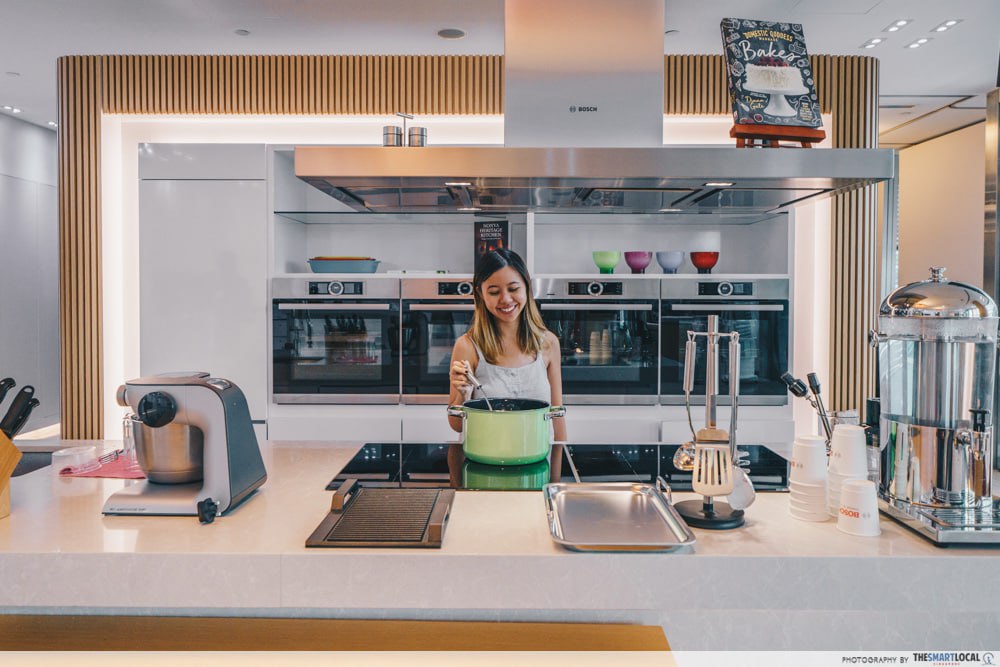
Myth: Salt increases the boiling point of water, making your water boil faster.
Reality: Before you start screaming at Mr Tan for teaching you the wrong thing in primary school science class, what he said was actually correct. There is some truth to this myth.
However, the amount of salt we add to our dishes when we’re cooking is so negligible that it hardly makes a difference to your pot of water’s boiling point. Hence, when it comes to cooking, salt won’t really make your water boil faster … unless you’re dumping in so much that your pot becomes a mini ocean, then in that case we’d be more worried about your high blood pressure.
8. It’s best to store food in Tupperware so they stay fresh for longer
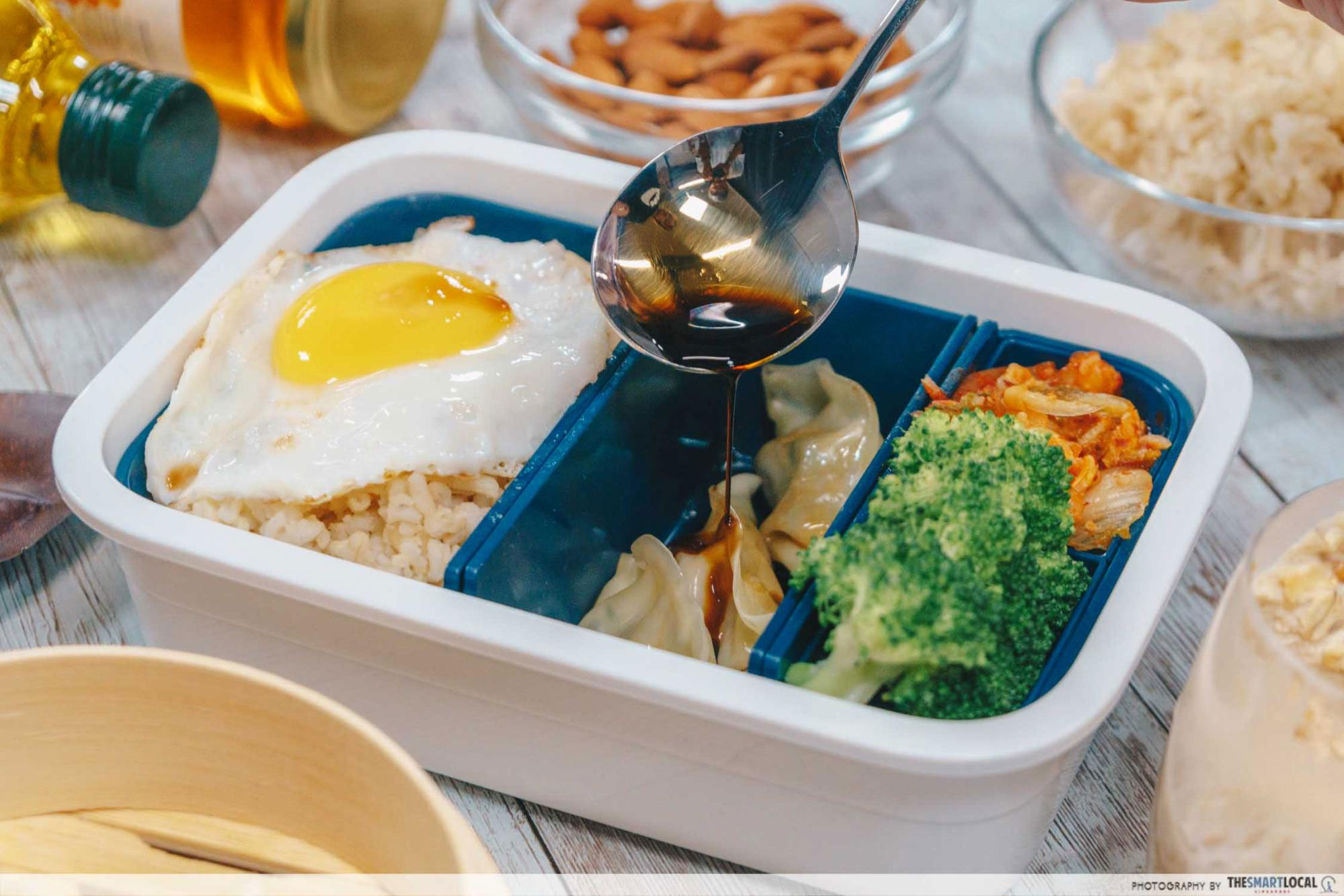
Myth: You can’t go wrong with storing food in Mom’s beloved Tupperware to keep them fresh for long periods of time.
Reality: We hate to break it to you but unfortunately, Tupperware isn’t the go-to for all occasions. While they’re a nifty way to keep your leftovers or bring food on-the-go, air-tight containers are actually the worst storage options for fresh vegetables due to the lack of air circulation, which makes your vegetables soggy.
Instead, you can store your vegetables and fruits in mesh bags where there’s better air circulation. If you don’t have a mesh bag on hand, poke some holes in a zip-lock bag and they’ll do the trick. Some common ingredients that require good air circulation include citrus fruits, potatoes, onions, and garlic – so make sure you don’t seal them up in non-breathable receptacles.
9. Adding oil to pasta prevents them from sticking together
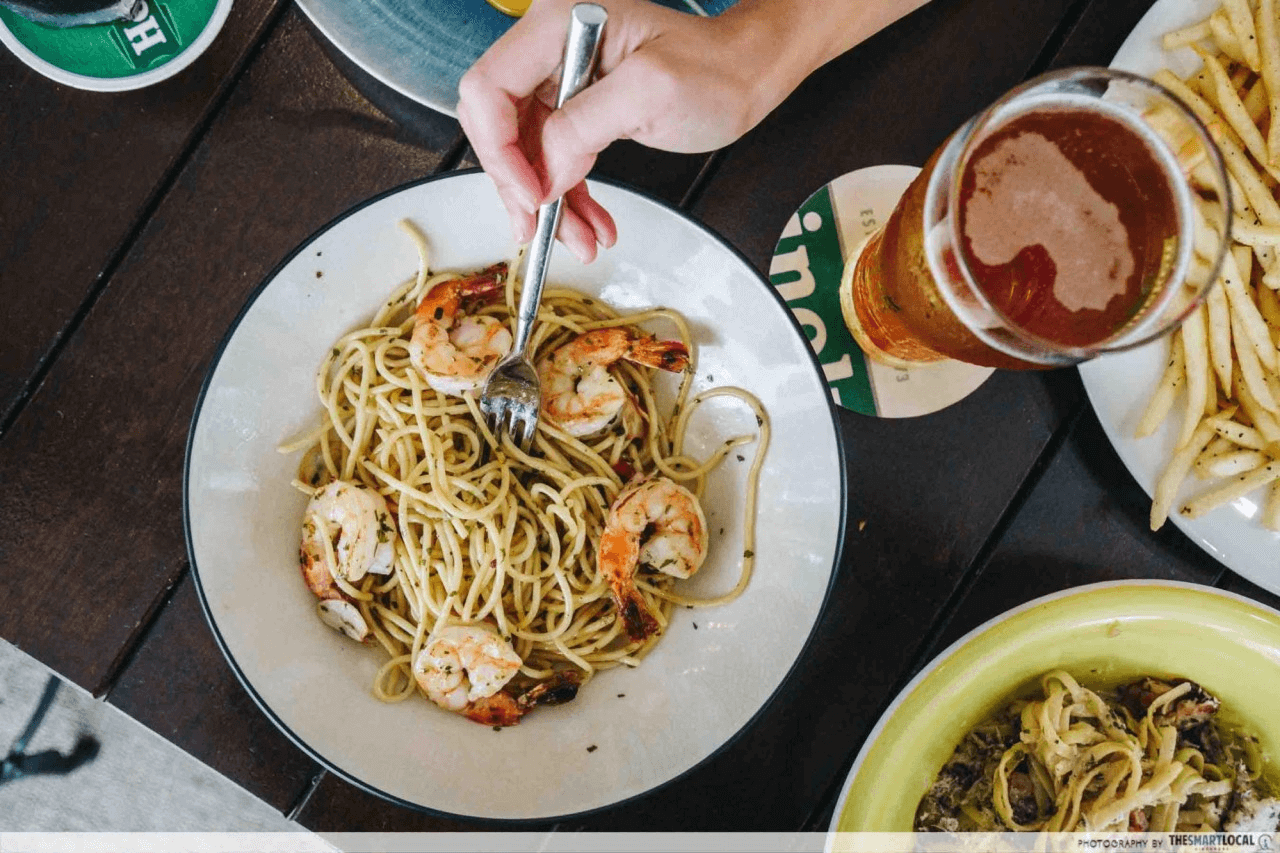
Myth: Adding oil to pasta helps prevent the noodles from sticking to one another, resulting in nicely separate forkfuls that don’t clump together.
Reality: While oil helps prevent our food from sticking to our cooking pan, it does not help prevent pasta noodles from sticking to each other. On the other hand, it actually causes the pasta to be extra slippery, meaning that any pasta sauce you add will just slip off instead of adhering to the noodles and making each mouthful well-coated and flavourful.
The trick to preventing clumpy noodles is simply to watch your cooking time and strive for al dente textures, instead of an overcooked, mushy mess where the carbohydrate content gets “overworked” from the heat.
While we’re on this subject, here’s a tip for pasta lovers. Add some salt to the pot of water before you add the pasta. This helps enhance the flavour of the noodles as the pasta will absorb the salt while cooking.
Cooking misconceptions debunked, now go forth & be a master chef
Here’s to fluffier scrambled eggs, less burnt pancakes, and yummier pasta. Now that these common misconceptions about cooking have been debunked, you can go ahead and share your new knowledge with your family and friends. Don’t feel discouraged if you have many “I was today years old” moments, because trust us when we say we were surprised too.
If you’d like to learn more about stuff you probably didn’t know about before:
